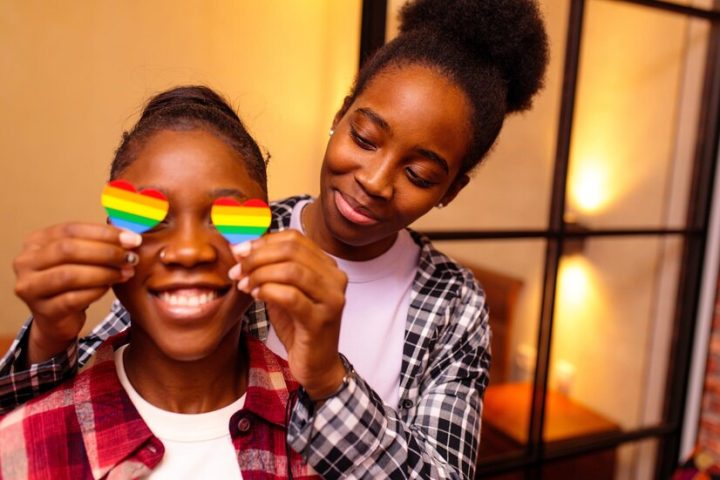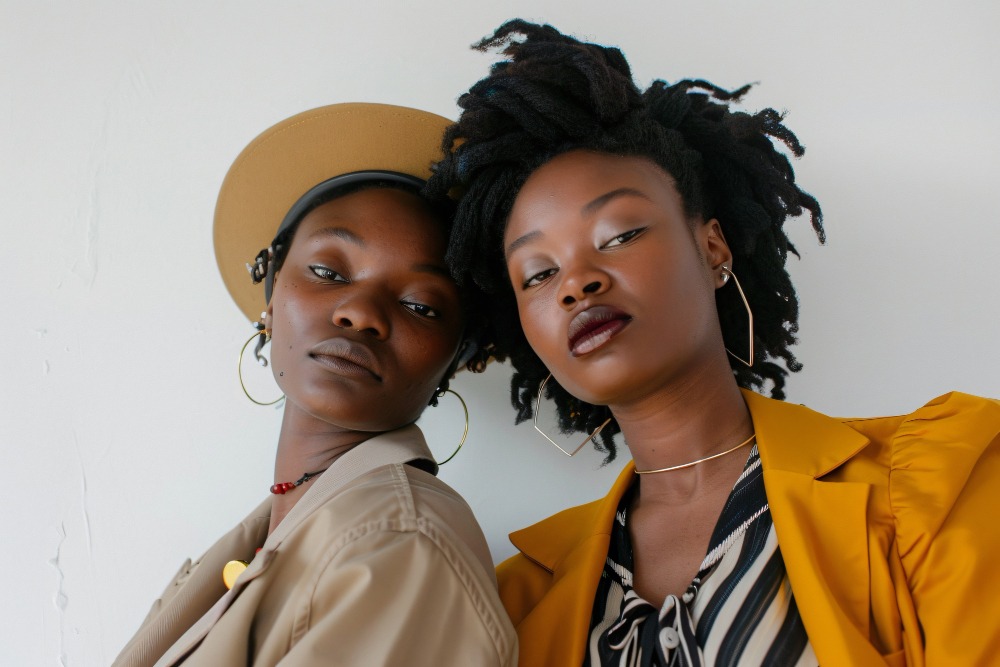In a world where misinformation can spread rapidly, it’s crucial to address and debunk myths about lesbian relationships and intimacy. These lesbian relationship myths not only perpetuate stereotypes but can also create unnecessary anxiety for those exploring their sexuality or entering same-sex relationships. In this comprehensive guide, we’ll tackle ten prevalent lesbian relationship myths, providing factual information to foster understanding and acceptance.
-
Myth: There’s Always a “Man” and a “Woman” in Lesbian Relationships
One of the most persistent lesbian relationship myths is the idea that same-sex couples must adhere to heteronormative roles, with one partner playing the “man” and the other the “woman.” This misconception stems from a limited understanding of relationship dynamics and gender expression.
Reality: Lesbian relationships, like all relationships, are unique and diverse. Partners may share responsibilities, take on different roles based on their individual strengths, or fluidly exchange roles. The idea that there must be a masculine and feminine role is a simplistic view that doesn’t reflect the complexity and variety of lesbian relationships.
Many lesbian couples reject these stereotypical roles altogether, creating partnerships based on equality, mutual respect, and individual preferences. It’s essential to recognize that gender expression and relationship roles are not inherently linked, allowing for a wide range of dynamics within lesbian relationships.
-
Myth: Lesbian Bed Death is Inevitable
The term “lesbian bed death” has been circulating for decades, suggesting that lesbian couples are destined to experience a decline in sexual intimacy over time. This is one of the most damaging lesbian relationship myths as it creates unnecessary fear and pressure.
Reality: While all long-term relationships may experience changes in sexual frequency or desire, this is not unique to lesbian couples. Research has shown that factors such as communication, stress levels, and overall relationship satisfaction play a much more significant role in sexual intimacy than sexual orientation.
Many lesbian couples maintain active and satisfying sex lives throughout their relationships. Like any couple, maintaining intimacy requires effort, open communication, and a willingness to explore and adapt as the relationship evolves. The myth of lesbian bed death often overlooks the diverse ways in which couples express intimacy beyond sexual activity.
-
Myth: All Lesbians Use Sex Toys
Another common misconception among lesbian relationship myths is that all lesbian sexual encounters involve sex toys. This myth not only oversimplifies lesbian sexuality but also perpetuates stereotypes about how same-sex female couples engage in intimacy.
Reality: The use of sex toys is a personal choice that varies among individuals and couples, regardless of sexual orientation. While some lesbian couples may incorporate sex toys into their intimate life, others may not. The decision to use or not use sex toys is based on personal preferences, comfort levels, and mutual agreement between partners.
It’s important to recognize that lesbian sexuality, like all human sexuality, is diverse and complex. Focusing solely on the use of sex toys diminishes the emotional and physical connections that form the foundation of intimate relationships.
-
Myth: Lesbians Can’t Get STIs
A dangerous myth that persists is the idea that lesbian sexual activities carry no risk of sexually transmitted infections (STIs). This misconception can lead to risky behaviors and a lack of proper sexual health care.
Reality: While the risk of STI transmission may be lower in some forms of sexual activity between women, it is not non-existent. STIs can be transmitted through skin-to-skin contact, the sharing of sexual fluids, and the use of shared sex toys. Common STIs that can be transmitted between women include herpes, HPV, bacterial vaginosis, and in some cases, HIV.
It’s crucial for individuals in lesbian relationships to practice safe sex, get regular STI screenings, and have open conversations about sexual health with their partners. Dental dams, gloves, and condoms for shared toys are all important tools in preventing STI transmission.
-
Myth: Lesbian Relationships Move Faster Than Heterosexual Ones
The stereotype of “U-Haul lesbians” – the idea that lesbian couples move in together very quickly – has led to the myth that all lesbian relationships progress faster than heterosexual ones. This is one of those lesbian relationship myths that can create unrealistic expectations.
Reality: The pace of any relationship depends on the individuals involved, not their sexual orientation. While some lesbian couples may choose to commit quickly, others take their time. Factors such as personal readiness, life circumstances, and compatibility play a much larger role in relationship progression than sexual orientation.
It’s important to remember that every relationship is unique, and there’s no “correct” timeline for milestones like moving in together or getting married. Healthy relationships, regardless of the partners’ genders, develop at a pace that’s comfortable for both individuals.
-
Myth: Lesbian Relationships Are Drama-Free
Some people believe that because lesbian relationships involve two women, they are free from the conflicts that can arise in heterosexual relationships. This is one of those lesbian relationship myths that sets unrealistic expectations.
Reality: All relationships, regardless of the genders involved, can experience challenges and conflicts. Lesbian couples face many of the same issues as heterosexual couples, such as communication problems, financial disagreements, or differing views on commitment. Additionally, lesbian couples may face unique challenges related to societal acceptance, family relationships, or navigating a heteronormative world.
Healthy relationships require effort, communication, and compromise, regardless of sexual orientation. The myth of drama-free lesbian relationships can lead to disappointment or feelings of failure when normal relationship challenges arise.
-
Myth: Bisexual Women in Lesbian Relationships Are More Likely to Cheat
This harmful myth stems from biphobia and misunderstandings about bisexuality. It suggests that bisexual women are somehow less committed or trustworthy in lesbian relationships.
Reality: A person’s likelihood of cheating is not determined by their sexual orientation. Bisexual individuals are just as capable of monogamy and commitment as anyone else. The decision to be faithful in a relationship is based on personal values, respect for one’s partner, and the strength of the relationship, not on sexual orientation.
This myth can create unnecessary tension in relationships and perpetuate harmful stereotypes about bisexual individuals. It’s important to judge each person as an individual and base trust on their actions and character, not on misconceptions about their sexuality.
-
Myth: Lesbian Relationships Are Always Egalitarian
While many lesbian relationships strive for equality, the myth that all lesbian relationships are automatically egalitarian oversimplifies the complex dynamics of human relationships.
Reality: Like any relationship, lesbian partnerships can have power imbalances or unequal dynamics. These can stem from differences in income, social status, age, or personal assertiveness. While many lesbian couples work towards creating egalitarian relationships, it’s not an automatic feature of same-sex female partnerships.
Healthy relationships, regardless of the partners’ genders, require ongoing effort to ensure both individuals feel valued, heard, and respected. This involves open communication, compromise, and a willingness to address and resolve conflicts fairly.
-
Myth: All Lesbians Want Children (or None Want Children)
Assumptions about lesbians’ desire for parenthood fall into two extreme myths: either all lesbians want children, or no lesbians want children. Both are oversimplifications that ignore the diversity of individual desires and life choices.
Reality: The desire to have children is a personal choice that varies among individuals, regardless of sexual orientation. Some lesbians dream of becoming parents, while others prefer not to have children. Many factors influence this decision, including personal goals, financial considerations, and life circumstances.
For those who do want children, lesbian couples have various options, including adoption, foster care, artificial insemination, or surrogacy. It’s important to respect the diverse choices lesbian individuals and couples make regarding parenthood, without making assumptions based on their sexual orientation.
-
Myth: Lesbian Relationships Are Just a Phase
This harmful myth suggests that lesbian relationships are temporary or not as valid as heterosexual relationships. It’s often used to dismiss or delegitimize same-sex female partnerships.
Reality: Lesbian relationships are just as real, valid, and potentially long-lasting as any other type of relationship. Many lesbian couples form committed, lifelong partnerships. The idea that these relationships are “just a phase” is rooted in homophobia and a lack of understanding about sexual orientation.
It’s crucial to recognize and respect the authenticity of lesbian relationships. Like all relationships, they require love, commitment, and effort to thrive, and they deserve the same recognition and support as heterosexual partnerships.
Conclusion:
Debunking these lesbian relationship myths is crucial for promoting understanding, acceptance, and respect for the diverse experiences of lesbian couples. By challenging these misconceptions, we can create a more inclusive society that recognizes the validity and complexity of all relationships, regardless of sexual orientation.
Remember, every relationship is unique, shaped by the individuals involved rather than by stereotypes or societal expectations. Whether you’re in a lesbian relationship, questioning your sexuality, or simply seeking to understand, it’s important to approach relationships with an open mind, respect for individual differences, and a willingness to challenge preconceived notions.
By moving beyond these lesbian relationship myths, we can celebrate the beautiful diversity of human connections and support healthy, loving relationships in all their forms.







